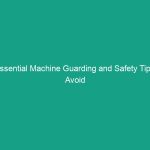Good Morning Team!
Today, we’re diving into a crucial topic: Essential Strategies for Effective Safety Meetings: Engage and Participate. This is not just another meeting; it’s an opportunity for all of us to enhance our Workplace Safety and ensure that we’re all on the same page when it comes to preventing accidents and injuries.
By actively participating in our Safety meetings, we can foster a culture of safety, reduce risks, and enhance our overall work Environment. Let’s explore why this is important and how we can make our safety meetings more effective.
Understanding Effective Safety Meetings
Effective safety meetings are designed to inform, engage, and empower employees. They go beyond simply sharing information; they create a dialogue about safety practices, potential Hazards, and strategies to mitigate risks.
Many employees might think that safety meetings are just a formality or a box to check. However, these meetings are critical for ensuring that everyone understands their roles in maintaining a safe workplace. The impact on our daily operations can be significant: reduced accidents, lower insurance costs, and a more cohesive team.
One common misconception is that safety meetings are only necessary for new employees or after an incident. In reality, ongoing discussions about safety are vital, as they keep safety top-of-mind and encourage a proactive approach to Hazards.
Key Hazards, Risks, and Safety Considerations
In our workplace, we face various hazards that can lead to accidents if not adequately addressed. Some key risks include:
- Slips, Trips, and Falls: Often caused by wet floors, uneven surfaces, or cluttered walkways.
- Machinery and Equipment Hazards: Improper use or Maintenance of equipment can lead to serious injuries.
- Ergonomic Risks: Poor workstation setup can cause musculoskeletal disorders over time.
- Environmental Hazards: Chemical spills or exposure to hazardous materials must be managed carefully.
Ignoring safety protocols can lead to severe consequences, including injuries, loss of productivity, and increased insurance premiums. Just last month, we experienced a minor incident due to a lack of communication during a safety meeting that could have been avoided with better engagement.
Best Practices, Procedures, & Actionable Advice
Now that we understand the importance of effective safety meetings, let’s discuss some Best Practices to make these meetings more engaging and beneficial:
1. Prepare an Agenda
Before the meeting, create a clear agenda outlining the topics to be discussed. This gives everyone a chance to prepare and know what to expect.
2. Encourage Participation
Ask open-ended questions and encourage team members to share their experiences and concerns. For example, you might ask, “What safety challenges have you encountered in your daily tasks?”
3. Use Real-Life Examples
Share case studies or real-life incidents that relate to the topics being discussed. This makes the information more relatable and underscores the importance of safety.
4. Keep it Interactive
Incorporate activities or demonstrations to illustrate safety practices. For instance, conducting a hands-on demonstration of proper lifting techniques can be more effective than just discussing them.
5. Summarize Key Points
At the end of each meeting, summarize the main takeaways and action items. This reinforces the information and ensures everyone leaves with a clear understanding of their responsibilities.
Regulations, Standards, and Compliance
It’s essential to stay informed about relevant safety Regulations and Standards, such as those set by OSHA (Occupational Safety and Health Administration). Compliance with these regulations is not just a legal requirement; it’s a commitment to protecting ourselves and our colleagues.
Failure to comply can result in fines and increased scrutiny from regulatory bodies, but more importantly, it can jeopardize the safety of our team members. Regularly reviewing safety standards in our meetings can help ensure we are all aligned and compliant.
Employee Engagement & Discussion
To foster a culture of safety, it’s crucial to engage employees in discussions. Here are some open-ended questions to consider:
- What safety improvements do you think we need to implement?
- Have you noticed any unsafe practices on the job site? How can we address them?
- What resources or Training would help you feel safer at work?
These questions can lead to valuable discussions that not only empower employees but also provide insight into potential safety improvements.
Conclusion & Key Takeaways
In summary, effective safety meetings are vital for maintaining a safe workplace. By preparing well, encouraging participation, using real-life examples, and staying compliant with safety regulations, we can enhance our safety culture.
Remember, safety is everyone’s responsibility, and your engagement in these meetings is crucial for our success. Thank you for your attention and commitment to making our workplace safer. Let’s prioritize safety together!


